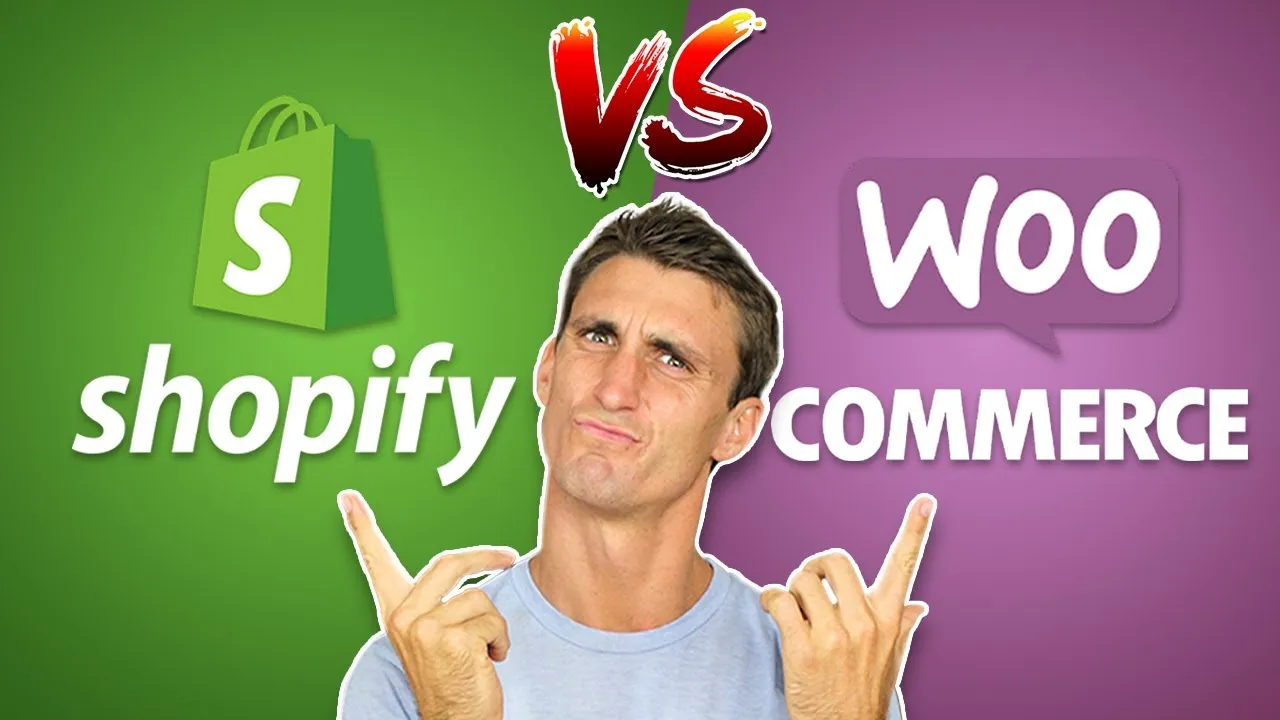Choosing the right platform is a crucial step when you decide to create a e-commerce website. In France, more than 93,376 active e-commerce shops were recorded in April 2025, with 7,484 new creations in this month alone⁴ecommerce-nation.fr. So you understand the importance of making the right choice from the outset. Here are five essential criteria to analyse to select the solution that will meet your needs while respecting your budget and your ambitions.

1. Define your objectives and needs
Before you start comparing platforms, take the time to clarify what you want from your platform. e-commerce website. Do you sell just a few handcrafted products, or do you plan to manage a large catalogue? The answer to this question will determine your choice between an all-in-one solution and an open source CMS that you can customise.
For example, if you want to launch your shop quickly without any advanced technical knowledge, a SaaS platform such as Shopify may be suitable. According to a 2025 study, Shopify has around 26 % global market share and manages more than 4.6 million e-commerce sites³. On the other hand, if you have a technical team or a developer, an open source CMS such as WooCommerce or PrestaShop offers greater flexibility and often lower long-term costs.
2. E-commerce website
The two main categories: SaaS vs open source
SaaS (Software as a Service) solutions
- Shopify easy to configure. Monthly package from 29 $; upgradeable depending on options; hosting included.
- Wix eCommerce intuitive drag-and-drop interface, ideal for beginners.
- BigCommerce The new site: adapted for growth, with advanced SEO features.
Open source CMS
- WooCommerce (on WordPress): free to install; paid extensions as required; perfect for total control. In April 2025, WooCommerce had 47.1 % market share in France⁶lebot.in.
- PrestaShop Very widespread in France (26.8 % of the total market)⁶lebot.in. Large number of modules, but requires technical knowledge for hosting and maintenance.
- Magento (Adobe Commerce) A robust solution for large catalogues, but expensive and complex to manage without a technical team.
Depending on your budget, your technical skills and your ambitions for growth, you need to choose between the ease of use of SaaS platforms and the freedom offered by open source solutions.
3. Compare costs and profitability
The cost of a e-commerce website is not limited to the price of the platform. You need to consider :
- Subscription or licence SaaS: SaaS platforms often include hosting, security and support, but their prices can climb with advanced options. Shopify offers packages ranging from 29 $ to 2,300 $ per month.
- Extensions and modules On WooCommerce, most plugins are chargeable (SEO, payment gateway, delivery); on PrestaShop, expect to pay between €50 and €300 per module, depending on complexity.litextension.com.
- Hosting and maintenance Open source: you need to finance high-performance hosting (€10 to €50 per month for moderate traffic) and provide updates.
- Transaction costs Shopify charges fees on each sale if you don't use Shopify Payments; WooCommerce depends on the payment provider you choose, with commissions averaging between 1.4 % and 2.9 % per transaction.
By 2025, the e-commerce market in France is expected to exceed 200 billion euroswith growth of +10 % compared to 2024⁹businessplanmodels.com. This dynamic may justify a higher initial investment if your business model is based on a high volume of transactions.
4. Handling and scalability
Ease of use is essential if you're managing your business alone. e-commerce website. SaaS platforms offer a standardised interface and 24/7 customer support. Shopify, for example, offers more than 8,000 extensions in its App Store to personalise your shop³.youtube.com.
In contrast, WooCommerce and PrestaShop offer unrivalled flexibility: customised design, customised code, choice of hosting. In April 2025, WooCommerce accounted for 47.1 % of the French market, but only 15.4 % of new creations, leaving room for PrestaShop for local startups⁶lebot.in. If your objective is rapid growth with a minimum of technical management, opt for a SaaS solution. For a high-traffic shop or a catalogue of thousands of products, an open source CMS coupled with scalable hosting is often more cost-effective in the long term.
5. Key features and extensions
For mastering your e-commerce siteIdentify the essential features:
- SEO and marketing Customisable URLs, meta tags, integrated blogs. Shopify and WooCommerce offer powerful SEO modules.
- Multi-channel sales on social networks (Facebook, Instagram) and marketplaces (Amazon, eBay). BigCommerce natively integrates multiple channels.
- Payment methods secure payment, split payments, digital wallets. SaaS solutions often include gateways, while open source solutions require you to install external modules.
- Inventory management including automatic synchronisation and breakage alerts. Magento is renowned for its advanced management, but requires a robust infrastructure.
- User experience : responsive design, fast loading time (< 3 seconds), fluid navigation. According to Google, 53 % of mobile visits are abandoned if a site takes more than 3 seconds to load¹⁰shopify.comcawl.fr.
Comparing the default functionalities and the available extensions helps you to assess the real cost of your project, especially if you need specific modules (loyalty programme, subscription, product customisation).
6. Security, support and maintenance
Safety is a major issue for all e-commerce websiteThis is because your customers' data (bank details, addresses) is sensitive.
- SaaS platforms automatic updates, SSL certificates included, PCI DSS (payment security standard) compliance.
- Open source CMS You should regularly install security patches and ensure that your extensions are compatible. Managed hosting (e.g. WooCommerce hosted on an optimised server) can reduce your maintenance workload.
Make sure you have quality support: FAQs, documentation, forums, live chat. In 2025, Shopify will have a customer satisfaction rate of 89 % for 24/7 support, compared with 75 % for open source communities¹¹. If you don't have technical skills, opt for a solution with dedicated support.
7. Practical comparison of platforms
Shopify
- Highlights Very easy to learn, hosting included, scalability with Shopify Plus, numerous marketing applications.
- Limits Transaction fees if you don't use Shopify Payments, limited personalisation without advanced coding.
WooCommerce (WordPress)
- Highlights total flexibility, wide ecosystem of plugins, cost-effective in the short term.
- Limits management of hosting, technical maintenance, dependence on the quality of extensions.
PrestaShop
- Highlights Strong in France, adapted to SMEs, large number of modules (over 3,000).
- Limits technical learning curve, sometimes high module costs.
BigCommerce
- Highlights native multi-channel, advanced SEO, scalable without additional transaction costs.
- Limits fewer themes than Shopify, more expensive pricing compared with WooCommerce.
Magento (Adobe Commerce)
- Highlights A complete solution for a large catalogue, B2B functionalities and a high level of customisation.
- Limits Cost: expensive (licence, hosting, development), requires a technical team.
To refine your thinking, ask yourself these questions: What volume of products are you selling? Do you expect a high level of traffic as soon as you go online? What initial and monthly budget can you allocate? In 2025, if you're targeting the French market only, PrestaShop and WooCommerce will still be the benchmarks (47.1 % for WooCommerce, 26.8 % for PrestaShop)⁶lebot.in. If you're targeting international markets, Shopify, BigCommerce and Magento are the best choice.
Conclusion
Choosing the platform for your e-commerce website is a strategic decision that impacts your entire business. You must :
- Define your needs precisely (number of products, budget, technical skills).
- Compare total costs: subscription/licence, modules, hosting, maintenance.
- Analyse scalability and ease of use.
- Check the essential functionalities: SEO, multi-channel, payments, stock management.
- Consider safety, support and the community.
By following these steps, you can make an informed choice and avoid unnecessary expenditure. Remember that e-commerce website is more than just a repository for products: it is an active sales channel, a marketing tool and a lever for growth. In 2025, with a steadily growing market (over €200 billion expected in France)⁹businessplanmodels.com and fierce competition (over 207,000 e-commerce sites)¹⁰pragmea.frYou can't go wrong.
¹ FEVAD, "Panorama du e-commerce français 2024", published in January 2025 cawl.fr
² Data Reportal, "Digital 2025: France", January 2025 alumio.com
³ Shopify, "Statistiques e-commerce dans le monde en 2025", March 2025 shopify.com
⁴ E-commerce Nation, "93,376 active e-commerce shops in France in April 2025". ecommerce-nation.fr
⁵ LitExtension, "PrestaShop vs Shopify: Your Ultimate 2025 Comparison" litextension.com
⁶ LeBot.in, "April 2025: an X-ray of a rapidly expanding ecosystem". lebot.in
⁷ Data Reportal, op. cit. alumio.com
⁸ BusinessPlanModels, "13 figures for the e-commerce market in 2025". businessplanmodels.com
⁹ Shopify, op. cit.
¹⁰ Pragmea, "Should we invest in e-commerce in 2025?"









